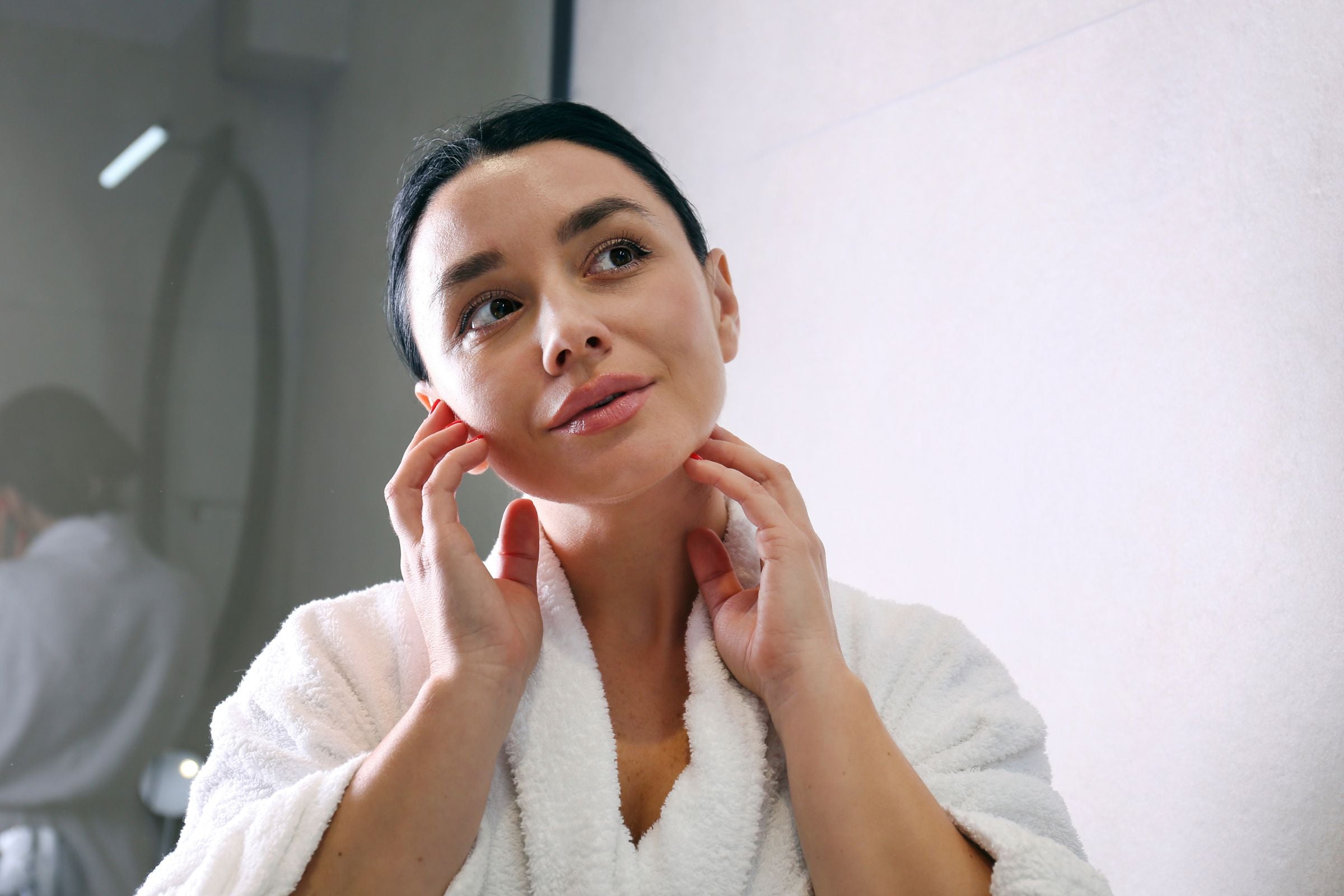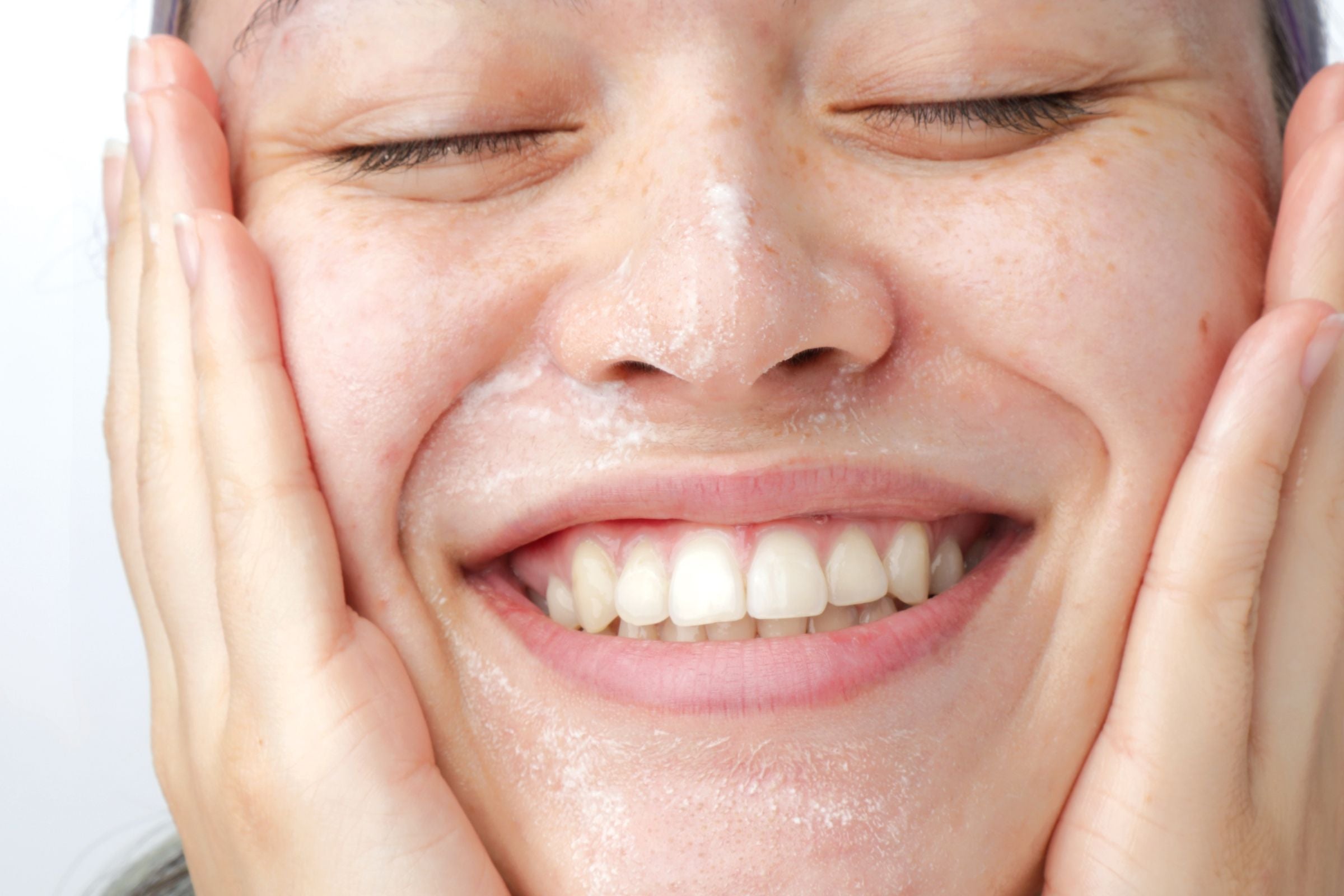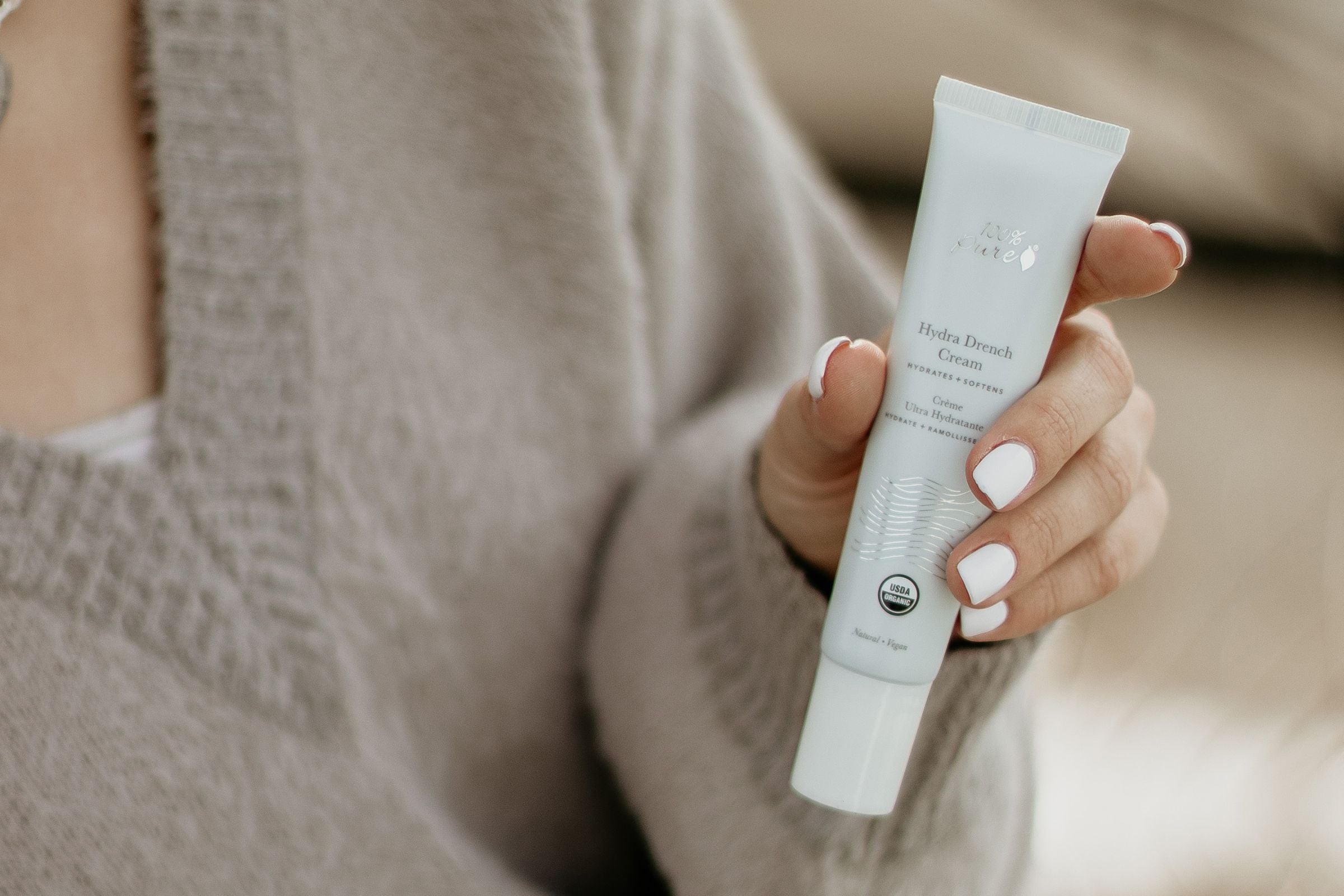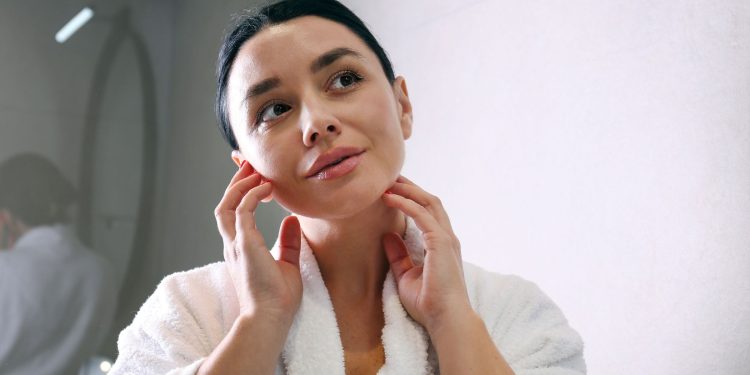Learn How to Protect and Restore Your Skin’s Natural Microbiome for a Healthier Complexion
Posted on November 21, 2024 Written by: 100% PURE®

Your skin is more than just a barrier between you and the outside world; it’s a thriving ecosystem teeming with life. This ecosystem, known as the skin microbiome, is a delicate balance of bacteria, fungi, and other microorganisms that work together to protect your skin and maintain its health. When properly cared for, your microbiome strengthens your skin’s defenses, improves hydration, and helps prevent irritation.
But here’s the problem: many skin care products designed to “improve” your skin may actually be doing more harm than good. Harsh cleansers, synthetic fragrances, and certain preservatives can disrupt this balance, stripping your skin of its natural allies. The result? Irritation, breakouts, and sensitivity feel like an endless battle.
If this sounds familiar, you’re not alone—but there’s good news. By understanding what your microbiome needs and choosing microbiome-friendly solutions, you can achieve the balanced, resilient skin you’ve been striving for. In this blog, we’ll guide you through the pitfalls of common skincare products and help you discover solutions that nurture, rather than disrupt, your skin’s natural harmony.
Your journey to healthier, microbiome-friendly skin starts here.
What Is the Skin Microbiome and Why Does It Matter?
Your skin microbiome is a vibrant community of trillions of microorganisms—including beneficial bacteria, fungi, and even viruses—that live on your skin’s surface. Far from being harmful, these tiny organisms play an essential role in maintaining your skin’s health and resilience.
Think of the microbiome as your skin’s natural guardian. It works tirelessly to protect you by keeping harmful bacteria in check, maintaining an optimal pH balance, and supporting the integrity of your skin barrier—the layer that locks in moisture and shields your body from environmental stressors. Without the microbiome’s help, your skin would struggle to stay healthy and strong.
The Importance of a Balanced Microbiome
When your microbiome is balanced, your skin thrives. A healthy microbiome:
- Strengthens the Skin Barrier: It acts as an extra layer of defense, helping to keep irritants, allergens, and pollutants out while locking essential hydration in.
- Boosts Moisture Retention: Beneficial bacteria enhance your skin’s ability to hold onto moisture, leaving it soft, supple, and less prone to dryness.
- Prevents Skin Issues: A harmonious microbiome reduces the risk of inflammation, acne, eczema, and sensitivity, creating a clear and even complexion.
By nurturing this ecosystem, you empower your skin to perform at its best—naturally.
Signs Your Microbiome Is Out of Balance
When your microbiome is disrupted, your skin sends out clear distress signals. These can include:
- Increased Breakouts: An imbalance can lead to an overgrowth of harmful bacteria, triggering acne and blemishes.
- Dryness and Flaking: Stripping away good bacteria often leaves the skin unable to retain moisture.
- Redness and Irritation: A weakened microbiome struggles to maintain the skin barrier, leaving it vulnerable to environmental stressors.
- Sensitivity to Products: If your skin reacts strongly to products you once used without issue, your microbiome might be out of sync.
Recognizing these signs is the first step toward restoring balance and giving your skin the support it needs to heal and thrive. In the next section, we’ll explore how to rebuild your microbiome with microbiome-friendly skincare solutions.

Common Skincare Ingredients That Harm the Microbiome
Your skincare routine might include products that promise radiant, flawless skin—but some of these contain ingredients that can unintentionally disrupt your skin’s microbiome. These ingredients compromise your skin’s natural defenses, leading to irritation, breakouts, and sensitivity. By learning what to avoid, you can make more informed choices that protect and nurture your skin’s delicate ecosystem.
Harsh Cleansers and Sulfates
Sulfates, such as sodium lauryl sulfate (SLS) and sodium laureth sulfate (SLES), are common foaming agents found in cleansers and shampoos. While they effectively remove dirt and oil, they also strip away your skin’s natural oils and beneficial bacteria. This can leave your skin feeling tight, dry, and unprotected, weakening the microbiome’s ability to maintain balance.
Opting for gentle, sulfate-free cleansers helps preserve your microbiome while keeping your skin clean and hydrated.
Alcohol-Based Products
Many toners, astringents, and other skincare products contain alcohol as a primary ingredient. Alcohol evaporates quickly, creating a temporary feeling of freshness, but it also has a harsh drying effect on the skin.
By disrupting the microbiome’s bacterial balance, alcohol-based products can leave your skin barrier compromised, leading to irritation, redness, and sensitivity. Look for alcohol-free alternatives that soothe rather than strip your skin.
Synthetic Fragrances and Preservatives
Synthetic fragrances and certain preservatives, like parabens and formaldehyde-releasing agents, are common culprits in microbiome disruption. These ingredients can irritate the skin and upset its natural bacterial balance, making your skin more vulnerable to inflammation and sensitivity.
Fragrance-free and preservative-conscious products are safer choices for maintaining a healthy microbiome. Always check labels and prioritize skincare products formulated with gentle, microbiome-friendly ingredients.
Benefits of Microbiome-Friendly Skincare
Switching to microbiome-friendly skincare isn’t just a passing trend—it’s a transformative approach to skin health. By nourishing and protecting the beneficial bacteria that naturally live on your skin, these products work with your body to maintain a healthy, balanced complexion. Here’s how microbiome-friendly skincare can elevate your routine and give you glowing resilient skin.
Strengthened Skin Barrier and Moisture Retention
Microbiome-friendly products are formulated to support your skin’s natural defenses. They help preserve the integrity of your skin barrier—the crucial layer that keeps hydration in and irritants out.
When your barrier is healthy and strong, your skin retains moisture more effectively, leaving it feeling soft, supple, and resilient. Over time, this reduces dryness and protects against environmental stressors like pollution and harsh weather.
Reduced Inflammation and Sensitivity
Skin prone to redness, irritation, or sensitivity often indicates an imbalanced microbiome. Microbiome-supportive products, such as those containing probiotics or prebiotics, calm inflammation by restoring harmony to your skin’s ecosystem.
This makes them especially beneficial for individuals with sensitive skin or conditions like rosacea and eczema. With consistent use, these products can reduce flare-ups and leave your skin feeling soothed and comforted.
Long-Term Skin Health and Balance
A thriving microbiome doesn’t just provide immediate relief—it sets the stage for lasting skin health. By supporting your microbiome, you’ll likely experience fewer breakouts, a smoother texture, and balanced oil production.
Over time, microbiome-friendly products can help you achieve a naturally radiant complexion that feels as good as it looks. With less dependence on harsh treatments or reactive care, your skin becomes healthier and more self-sufficient.
Investing in microbiome-friendly skincare is an investment in the future of your skin. In the next section, we’ll guide you to specific ingredients and products that nurture your microbiome while delivering results you’ll love.
Microbiome-Friendly Skincare Solutions from 100% PURE
If you’re ready to give your skin the care it deserves, 100% PURE offers a range of microbiome-friendly products designed to nurture your skin’s natural ecosystem. Gentle yet effective, these products prioritize hydration, balance, and nourishment without disrupting your skin’s beneficial bacteria. Here are some standout options:
1. Fermented Rice Water Toner
This gentle toner is a must-have for anyone looking to hydrate and balance their skin without stripping it of its natural oils. Formulated with fermented rice water, it’s packed with nutrients that support your microbiome while leaving your skin refreshed and glowing. Use it after cleansing to prep your skin for the next steps in your routine.
2. Green Tea EGCG Concentrate Serum
For calming irritated skin and reducing redness, our Green Tea EGCG Concentrate Serum is a game-changer. Rich in antioxidants and anti-inflammatory compounds, this serum supports a healthy skin barrier while soothing inflammation. It’s perfect for sensitive skin or anyone dealing with redness and irritation.
3. Mushroom Peptide Serum
Nourish your skin with the hydrating and fortifying benefits of the Mushroom Peptide Serum. Packed with peptides derived from mushrooms, this serum strengthens your skin’s resilience and promotes hydration—key factors in maintaining a balanced microbiome.
4. Restorative Sea Culture Extra Riche Créme
If your skin craves deep hydration, this ultra-rich moisturizer is your answer. Our Restorative Sea Culture Extra Riche Créme helps repair and maintain your skin barrier while locking in moisture to protect against environmental stressors. It’s an ideal choice for dry or mature skin in need of intensive care.
5. Hydra Drench Cream
For those with oily or combination skin, the Hydra Drench Cream delivers hydration without clogging pores. This lightweight, microbiome-friendly moisturizer uses aloe vera and chia seed gel to keep your skin hydrated and balanced, making it a go-to for those who prefer a non-greasy finish.
By choosing 100% PURE’s microbiome-friendly products, you can build a skincare routine that supports healthy, balanced skin from the inside out. In the next section, we’ll share tips on integrating these solutions into your daily regimen for optimal results.

Tips for Supporting Your Microbiome at Home
Creating a routine that nurtures your skin microbiome doesn’t have to be complicated. By adopting a few mindful habits, you can protect and strengthen your skin’s natural defenses, setting the foundation for a healthy, glowing complexion. Here’s how:
Avoid Over-Cleansing
While cleansing is essential, over-cleansing can do more harm than good. Washing your face too frequently or using harsh cleansers can strip away the beneficial bacteria and natural oils your skin needs to stay balanced.
Stick to a gentle cleansing routine—usually once in the morning and once at night is sufficient. Choose a microbiome-friendly cleanser that cleans without over-drying, leaving your skin refreshed but not tight.
Choose Mild, pH-Balanced Products.
The skin’s natural pH is slightly acidic, around 4.5 to 5.5, which helps maintain a thriving microbiome. Using products that are too alkaline or acidic can disrupt this balance, leading to irritation and microbiome imbalance.
Look for pH-balanced skincare products designed to respect your skin’s natural chemistry. These options gently cleanse and hydrate while preserving the optimal environment for your microbiome.
Stay Hydrated and Maintain a Balanced Diet
What you put into your body can be just as important as what you put on your skin. Staying hydrated helps maintain your skin’s moisture levels, while a diet rich in nutrients, antioxidants, and probiotics supports your skin from the inside out.
Incorporate foods like yogurt, kimchi, and sauerkraut for natural probiotics, and eat plenty of fruits and vegetables to provide the vitamins and minerals your skin craves. Healthy habits translate to a more balanced microbiome and radiant skin.
FAQ Section
How do I know if a product is microbiome-friendly?
Look for products that are labeled as “microbiome-friendly” or contain ingredients like probiotics, prebiotics, or postbiotics, which support the skin’s beneficial bacteria. Avoid products with harsh sulfates, alcohol, synthetic fragrances, and preservatives known to disrupt the microbiome. Checking for pH-balanced formulations can also help ensure the product works harmoniously with your skin.
Can I repair a damaged microbiome, and how long does it take?
Yes, a damaged microbiome can be repaired with the right care. Switching to microbiome-friendly products and avoiding harsh ingredients will help your skin begin its recovery. The time it takes varies depending on the severity of the damage, but most people notice improvements within a few weeks. For significant changes, it may take several months of consistent care.
Are natural products always microbiome-safe?
Not necessarily. While many natural products are gentle and beneficial, some natural ingredients can still irritate the skin or disrupt the microbiome. For example, essential oils like tea tree or citrus can be too strong for sensitive skin. Always review the ingredient list and choose products specifically designed to be microbiome-friendly.
How does diet affect the skin microbiome?
Diet plays a crucial role in supporting your skin’s microbiome. Eating a balanced diet rich in probiotics (found in fermented foods like yogurt and kimchi) and prebiotics (found in fiber-rich foods like bananas and asparagus) can promote a healthy microbial balance. Avoid excessive sugar and processed foods, which can negatively impact your microbiome and skin health.
Do anti-aging products disrupt the microbiome?
Some anti-aging products can disrupt the microbiome, especially if they contain harsh ingredients like retinoids or high concentrations of acids. However, there are microbiome-friendly anti-aging solutions that use gentle, nourishing ingredients to promote collagen production and hydration without harming your skin’s natural bacteria. Always opt for formulations that balance efficacy with microbiome safety.
Conclusion
Your skin microbiome is the unsung hero of your skincare routine, playing a vital role in maintaining balance, hydration, and protection. By understanding the importance of this ecosystem and taking steps to nurture it, you can unlock the full potential of healthy, glowing skin.
Microbiome-friendly skincare products, like those offered by 100% PURE, provide a gentle and effective way to care for your skin without disrupting its natural defenses. From strengthening your skin barrier to calming inflammation and promoting long-term health, these products work harmoniously with your microbiome to deliver lasting results.
Prioritizing your microbiome isn’t just a trend—it’s a smarter way to care for your skin. With the right choices, you can achieve a balanced complexion that feels as good as it looks, knowing you’re supporting your skin’s natural ability to thrive.














